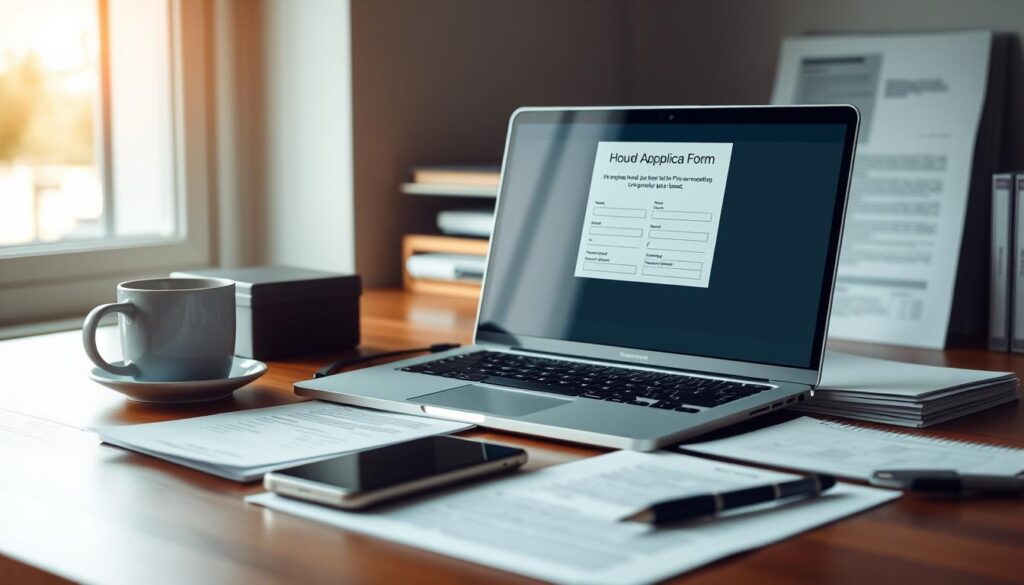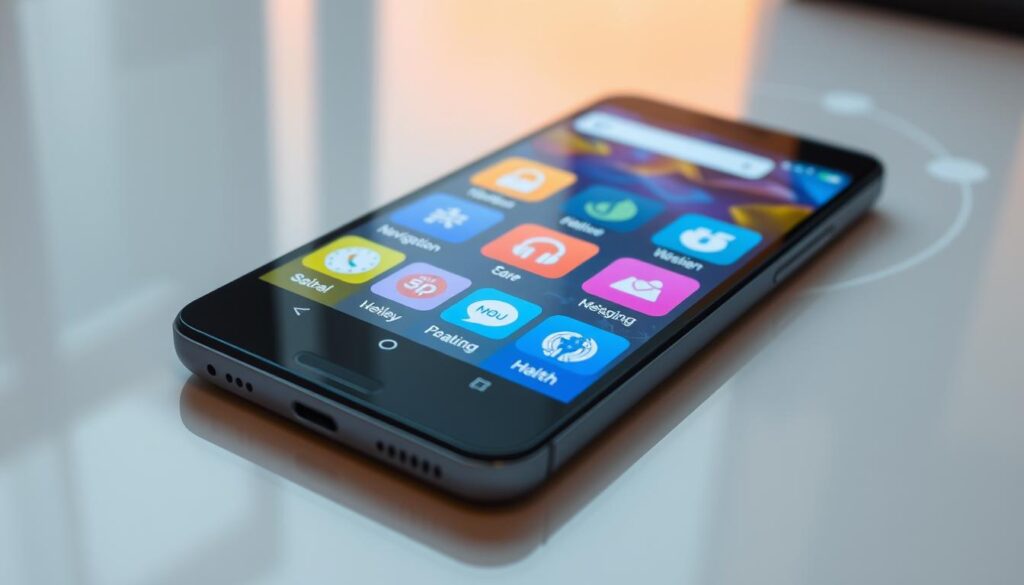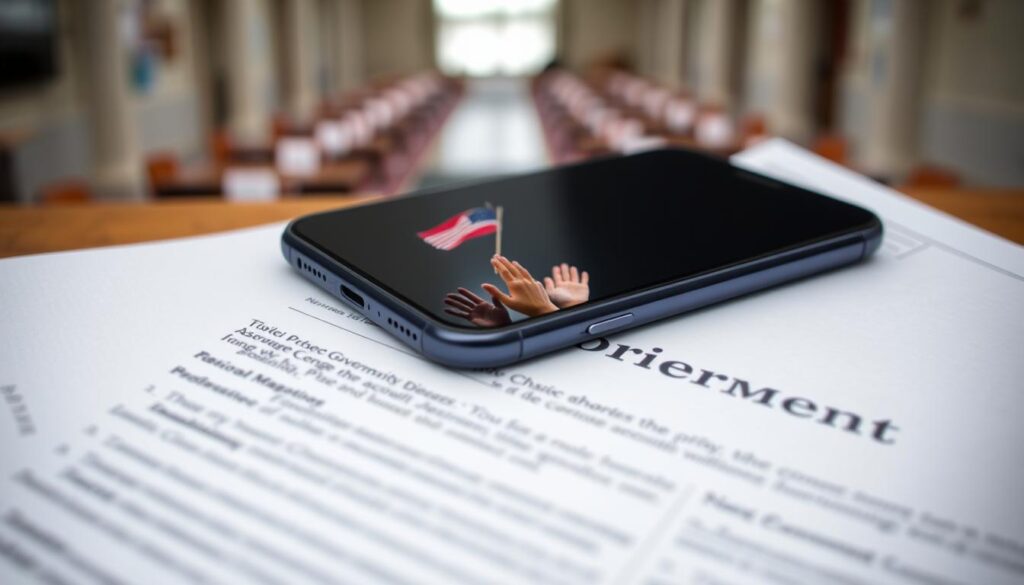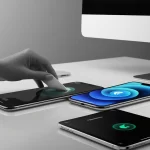If you’re finding it hard to afford a smartphone, you might get a free government iPhone. This is through the Lifeline Assistance Program. It helps low-income families get phones, including iPhones, at a low cost or for free.
To get a free iPhone, you need to meet certain criteria. Then, you just have to apply. This way, you can stay in touch with loved ones and access important services without spending a lot.
The Lifeline Assistance Program has helped millions of Americans. It makes sure low-income people and families can use communication tools. In this guide, we’ll show you how to get a free government iPhone. This way, you can use this great program and stay connected without spending too much.
Key Takeaways
- The Lifeline Assistance Program provides free or discounted iPhones to eligible low-income households.
- Eligibility is based on income or participation in government assistance programs.
- The application process involves submitting required documentation and choosing a Lifeline provider.
- Free government iPhones come with limited features and data allowances.
- Maintaining eligibility requires annual recertification and reporting changes in status.
Understanding the Lifeline Assistance Program
The Lifeline Assistance Program is a key effort to make mobile devices and services affordable for low-income families in the U.S. It helps bridge the digital gap and supports social and economic inclusion for those who need it most.
What is the Lifeline Assistance Program?
This program is funded by the government to give discounted or free mobile devices and services to those who qualify. It aims to make sure everyone, no matter their income, can stay connected and be part of the digital world.
History and Purpose of the Program
Started in 1985, the Lifeline Assistance Program has grown with technology. It began with discounted landline phones and now includes wireless and smartphones. This change reflects the growing role of mobile devices in our lives.
The main goal is to give low-income families affordable mobile access. This helps them stay in touch with loved ones and access important services. The program aims to close the digital gap, promoting inclusion and opportunities for education, work, and community involvement.
“The Lifeline Assistance Program is a crucial initiative that helps to ensure that all Americans, regardless of their financial situation, can access the essential communication tools needed to thrive in today’s digital world.”
This government subsidy highlights the value of affordable mobile devices and services. It empowers low-income families to fully engage in society and reach their goals.
Eligibility Criteria for Free Government iPhones
To get a free government iPhone, you must meet certain criteria. These rules help make sure the program helps those who really need it. Here’s what you need to know to get a free iPhone.
Income-Based Eligibility
Income is a key factor for the Lifeline Assistance Program. Your household income must be at or below 135% of the Federal Poverty Guidelines. These numbers change every year and depend on your household size.
For example, in 2021, a single person could qualify if they made $17,388 or less. This shows how income affects your eligibility.
Participation in Government Assistance Programs
You might also qualify if you or a family member gets government help. This includes:
- Medicaid
- Supplemental Nutrition Assistance Program (SNAP)
- Supplemental Security Income (SSI)
- Federal Public Housing Assistance (FPHA)
- Veterans Pension and Survivors Benefit
- Tribal-specific programs, such as Bureau of Indian Affairs General Assistance
Being in any of these programs shows you need financial help. This makes you eligible for a free iPhone through Lifeline.
State-Specific Eligibility Requirements
While income and government program rules are the same everywhere, some states have their own rules. These might include different income levels or state-specific programs.
It’s important to check with your state’s public utilities commission or the Lifeline program administrator. They can tell you about any state-specific rules that might apply to you.
Knowing the rules for free government iPhones helps you see if you qualify. Meeting the income or government program requirements is key to getting a free iPhone and the Lifeline program’s benefits.
Free Government iPhone Phone Eligibility and Application Process
To get a free government iPhone, you need to follow a simple process. First, collect all the documents that show you qualify for Lifeline. These usually include proof of income, government aid, ID, and where you live.
With your documents in hand, pick a Lifeline provider in your area. It’s important to compare services and coverage. Look at network strength, data, texts, extra features, and customer support.
- Network coverage in your area
- Monthly talk, text, and data allowances
- Additional features or benefits offered
- Customer service and support
After picking a provider, fill out their application. Most offer online forms for ease. Make sure to provide all needed info and attach your documents.
Remember, submitting false or incomplete information on your Lifeline application can result in delays, denial of benefits, or even legal consequences.
After applying, the provider will check if you qualify. How long this takes depends on the provider and how many applications they get. If you’re approved, you’ll get a free iPhone from them.
Keep your eligibility up to date while in the Lifeline program. Providers often ask for yearly checks to make sure you still qualify. Answer these requests quickly to keep your service going.
Choosing a Lifeline Provider
After checking if you qualify for Lifeline, it’s time to pick a provider. There are many options for subsidized mobile services. Comparing them can help you find the best one for you.
Comparing Available Providers
Research and compare Lifeline providers in your area. Each offers different devices, data, and features. Key things to look at include:
- Network coverage in your area
- Data allowances and talk time minutes
- Type of devices offered (smartphones, basic phones, etc.)
- Additional features or benefits (e.g., free hotspot access, international calling)
- Customer service and support
Coverage and Service Quality
Network coverage and service quality are crucial. A good provider ensures you can make calls, send texts, and use data without problems.
Reading customer reviews can give you insights. Look for feedback on coverage, call quality, and data speeds in your area. This helps you make a smart choice.
“I’ve been using [Provider A] for my Lifeline service, and I’m really happy with their coverage in my area. Calls are clear, and I rarely experience dropped connections.” – Sarah, Lifeline participant
Here’s a table to compare coverage and service quality of popular Lifeline providers:
| Provider | Network Coverage | Customer Satisfaction |
|---|---|---|
| Safelink Wireless | Nationwide coverage using TracFone’s network | 4.1 out of 5 stars |
| Assurance Wireless | Coverage through T-Mobile and Sprint networks | 3.9 out of 5 stars |
| Access Wireless | Utilizes the AT&T network for coverage | 4.3 out of 5 stars |
| enTouch Wireless | Operates on the T-Mobile network | 4.0 out of 5 stars |
By comparing Lifeline providers, you can choose the best one for your needs. This ensures a great experience with your free government iPhone.
Required Documentation for Application
To get a free government iPhone through the Lifeline Assistance Program, you need to show proof of your eligibility. The program makes sure only those who qualify get the benefits. AppleDiscovery offers resources to help you understand what documents you need and how to apply.
Proof of Income
Income is a key factor for the Lifeline program. You must show your household income is at or below 135% of the Federal Poverty Guidelines. Here are some ways to prove your income:
- Federal or state tax returns from the previous year
- Current income statement or pay stubs
- Social Security statement of benefits
- Veterans Administration statement of benefits
- Unemployment or Workers’ Compensation statement of benefits
- Divorce decree or child support documentation showing income
Proof of Government Assistance Program Participation
You can also qualify for a free iPhone by being part of certain government programs. You need to provide official documents from these programs. Here are some examples:
| Government Assistance Program | Required Documentation |
|---|---|
| Medicaid | Medicaid card or eligibility letter |
| Supplemental Nutrition Assistance Program (SNAP) | SNAP card or eligibility letter |
| Supplemental Security Income (SSI) | SSI benefit verification letter |
| Federal Public Housing Assistance (FPHA) | FPHA award letter or lease agreement |
| Veterans Pension and Survivors Benefit | Benefit verification letter |
Proof of Identification and Address
You also need to show who you are and where you live. You can use a driver’s license, state ID, passport, or other government-issued photo ID. For your address, you can provide a utility bill, lease agreement, mortgage statement, or any official document with your name and address.
By collecting the right documents and following the application steps, you can apply for a free government iPhone. It’s important to meet the documentation requirements to get your application processed and approved quickly.
Submitting Your Application
Now that you have all your documents ready, it’s time to apply for a free government iPhone. You can apply online or in person, depending on your Lifeline provider.
Applying online is usually the easiest and fastest way. It’s simple and you might get a quicker answer than if you apply in person. But, some providers might ask for more steps or a visit to finish your application.

When you apply, make sure to follow the provider’s instructions closely. Include all needed info and documents to avoid delays or application denial. Check your application for any mistakes before you send it in.
“I was thrilled to discover that I could apply for a free government iPhone online. The process was simple, and I received my approval notification within a week.” – Sarah, Lifeline program beneficiary
Here are some tips for the application process:
- Get all your documents ready before you start
- Decide if you want to apply online or in person, based on your provider’s rules
- Double-check your application for any mistakes or missing info before you submit it
- Be ready to give more information or documents if your provider asks for them
By preparing well and submitting your application correctly, you can boost your chances of getting a free government iPhone. This way, you can start enjoying the Lifeline program’s benefits.
What to Expect After Applying
After you apply for a free government iPhone through the Lifeline Assistance Program, you’ll need to wait. The Lifeline provider will check if you’re eligible. You can track your application status by contacting the provider or using their online portal.
Application Processing Time
The time it takes to process your application varies. It depends on the Lifeline provider and how many applications they have. Usually, it takes a few weeks. Be patient and let them review your application carefully.
Notification of Approval or Denial
After processing, you’ll get a notification from the Lifeline provider. It might be a letter, email, or phone call. This depends on how they prefer to communicate and your contact info.
If approved, the notification will tell you what to do next. It will explain when and how you’ll get your free iPhone. Make sure to follow these instructions for a smooth transition.
If denied, the notification will explain why. This could be because of missing documents or not meeting the program’s criteria. If you think there was an error or your situation has changed, you can appeal or reapply.
Remember, the Lifeline Assistance Program is here to help. It’s designed for low-income individuals and families. Don’t give up if you face challenges. With patience and persistence, you can get your free government iPhone.
Benefits and Limitations of Free Government iPhones
Free government iPhones are given out through the Lifeline Assistance Program. They help low-income people and families stay connected. But, it’s key to know what these phones can and can’t do.
Included Features and Services
These phones have basic features:
- Voice calling
- Text messaging
- Internet access
- Voicemail
- Caller ID
These features are great for the basics but might not have all the fancy stuff of pricier phones. They offer a solid, simple way to stay in touch.

Data and Talk Time Allowances
Each Lifeline provider has different data and talk time limits. It’s important to know these to avoid extra costs.
| Provider | Monthly Data Allowance | Monthly Talk Time Limit |
|---|---|---|
| Assurance Wireless | 3 GB | 350 minutes |
| Safelink Wireless | 2 GB | 350 minutes |
| Access Wireless | 4 GB | 500 minutes |
These limits are set to help with basic communication needs. But, it’s wise to watch your usage to stay within these limits. Some providers might sell extra data or minutes, but that’s extra money for you.
“The Lifeline program’s free government iPhones have been instrumental in keeping low-income families connected, but it’s important for users to understand the limitations of these plans to avoid unexpected charges.” – Mark Johnson, Telecommunications Expert
In short, free government iPhones are a big help for those who need them. Knowing what they can do and their limits helps users get the most out of this program.
Maintaining Your Lifeline Eligibility
After getting approved for Lifeline and your free government iPhone, it’s key to keep your eligibility. Lifeline providers, like Gen Mobile, ask you to recertify every year. They also want to know about any changes in your eligibility status to follow program rules.
Annual Recertification Process
To keep getting Lifeline benefits, you need to recertify every year. This means you’ll have to send in new documents to show you still qualify. Your Lifeline provider will remind you when it’s time, usually around the same time each year.
When you recertify, you’ll need to provide:
- Proof of income, like pay stubs or tax returns
- Proof that you’re still in a government program
- Any extra info your Lifeline provider or state might ask for
If you don’t recertify, you could lose your Lifeline benefits. This includes your free government iPhone.
Reporting Changes in Eligibility Status
It’s not just about recertifying once a year. You also need to tell your provider about any changes in your eligibility. This includes:
- If your income goes up and you no longer qualify
- If you stop getting government assistance
- If your household changes in a way that might affect your eligibility
Telling your provider about these changes right away is important. This way, you can keep getting your benefits and avoid any penalties. Providers, like Apple Discovery, keep your info safe during this process.
| Event | Required Action | Timeframe |
|---|---|---|
| Annual recertification | Submit updated eligibility documentation | Annually, near enrollment anniversary |
| Income increase above threshold | Report change to Lifeline provider | Immediately upon change |
| Termination of government assistance | Notify Lifeline provider | Within 30 days of termination |
| Change in household composition | Inform Lifeline provider | Within 30 days of change |
By knowing the rules and telling your provider about any changes, you can keep getting your free government iPhone. This way, you’ll also follow Lifeline program rules.
Conclusion
The free government iPhone program is key in making sure everyone has access to technology. It’s part of the Lifeline Assistance Program. This helps low-income Americans get into the digital world.
Getting a free iPhone might seem hard at first. But, it can really change lives for those who qualify. It gives people a way to find jobs, learn new things, and stay in touch with loved ones.
As technology gets better, programs like Lifeline show we care about fairness. They help everyone get the tools they need to succeed. If you think you might be eligible for a free iPhone, start looking into it. It could be the first step to a better future.
FAQ
What is the Lifeline Assistance Program?
The Lifeline Assistance Program helps low-income families get affordable phones and services. This includes iPhones for those who qualify in the United States.
Who qualifies for a free government iPhone?
You might get a free iPhone if your income is low. You need to make less than 135% of the Federal Poverty Guidelines. Or, if you get Medicaid, SNAP, SSI, or FPHA, you might qualify too.
How do I apply for a free government iPhone?
First, collect your proof of income or government program participation. You’ll also need ID and address proof. Then, pick a Lifeline provider and apply online or in-person.
What documentation is required to apply for a free government iPhone?
You’ll need income proof like tax returns or pay stubs. Or, proof of government program participation. Also, ID and address proof, like a driver’s license or utility bill, are required.
How long does it take to process a free government iPhone application?
Processing times vary by provider and application volume. Most take a few weeks. You’ll get a notification by mail, email, or phone.
What features and services are included with a free government iPhone?
Free iPhones offer voice calls, texts, and internet. But, data and talk time limits are set. Be aware of extra costs if you go over these limits.
How often do I need to recertify my eligibility for Lifeline benefits?
You must recertify every year to keep your free iPhone. This means updating your income or program participation proof.
What should I do if my eligibility status changes?
If your income or program status changes, tell your Lifeline provider. Not reporting changes can mean losing your benefits.






